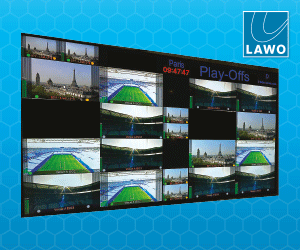AVPro in conversation with Peter Janis of Radialeng, the acoustics expert, on the growing market for home studios. Home studios are growing in popularity. In your estimate there are half a million homes in North America that have home studios. What do you attribute the growing popularity to? I think that the advent of the […]

AVPro in conversation with Peter Janis of Radialeng, the acoustics expert, on the growing market for home studios.
Home studios are growing in popularity. In your estimate there are half a million homes in North America that have home studios. What do you attribute the growing popularity to?
I think that the advent of the computer and low-cost recording software like Garage Band has had a tremendous impact. Musicians at all levels can have fun making music and I guess doing a lot more creative stuff on their computers as compared to maybe playing games. The home studio enables the amateur to get involved while also allowing the established artist to record in the comfort of his or her home at a lower cost than going to a commercial studio. So the market has changed not only based on the available technology, but also due to tighter production budgets.
According to you, a person could create a home studio for as little as $200. What would some of the low-cost solutions be?
I think it is not so much that someone can create a home studio for $200, but this is the entry point to actually hearing a sonic benefit to acoustic treatment. Once you begin to hear the benefit, you will quickly come to the realisation as to why professional studios and broadcasters treat their rooms. This same realisation is now beginning to take hold in video conferencing and in larger venues such as gymnasiums and houses of worship where intelligibility is important. Intelligibility or sending out a clear message is critical when trying to communicate. Rooms that are full of echo pose many acoustic challenges and are easily fixed with 25% absorption on the walls.
What sort of room in terms of shape and position in the house would be ideal for a home studio?
I think that home studios take a different perspective. You use what you have. In other words, it is not so much trying to build the perfect room, but rather making the best of what is available. By strategically placing acoustic panels on the walls, one can quickly turn a terrible room into a functional workspace. This is really what we are talking about.
What are the common mistakes committed when creating a home studio?
The biggest mistake is seeing people spend thousands of dollars on the very best microphone, or converter, using up all of the available budget, only to find that the room is so bad that you cannot produce a faithful recording. We always recommend starting with good quality gear, but in doing so, making sure that a balanced approach is taken. Proper acoustic treatment will do much more for you than anything else. Ultimately, you must be able to take a recording from one room to another or the car and it must translate well. Once you begin to get familiar with your room and how it sounds, you will gain confidence with your mixes and your production quality will increase.








































































